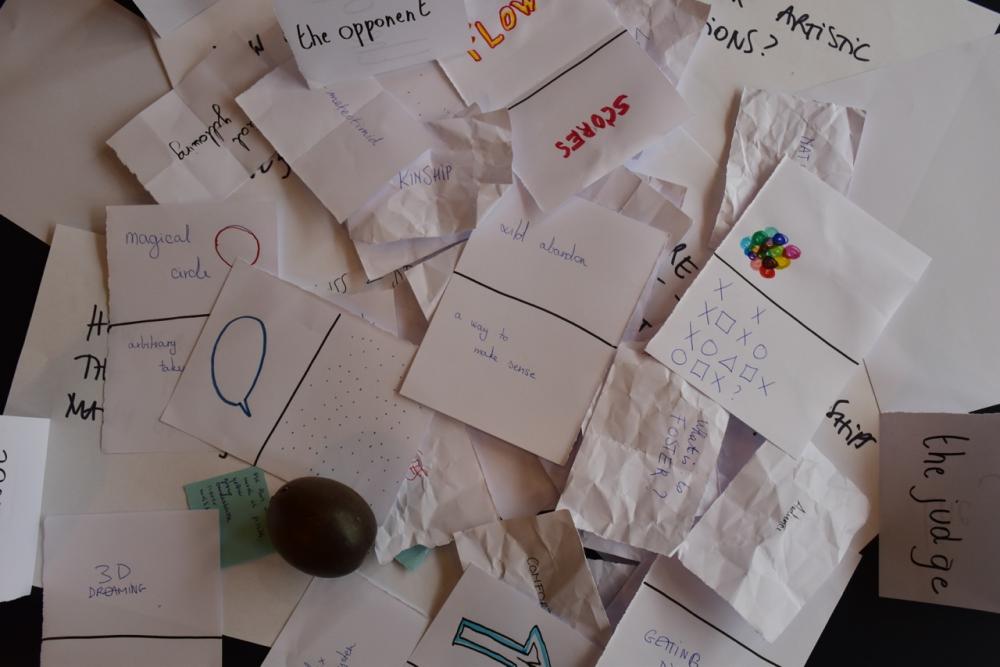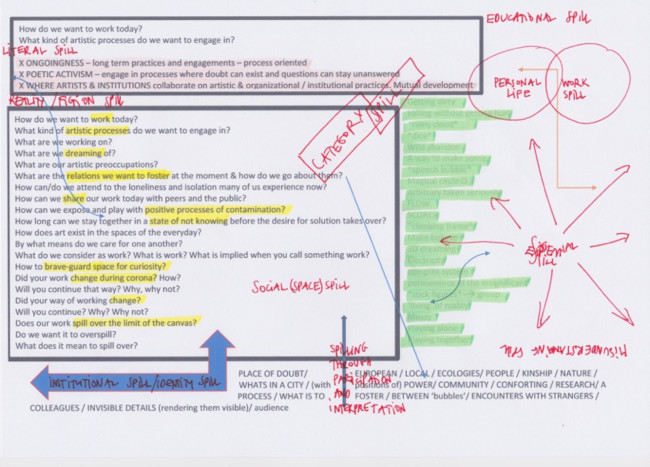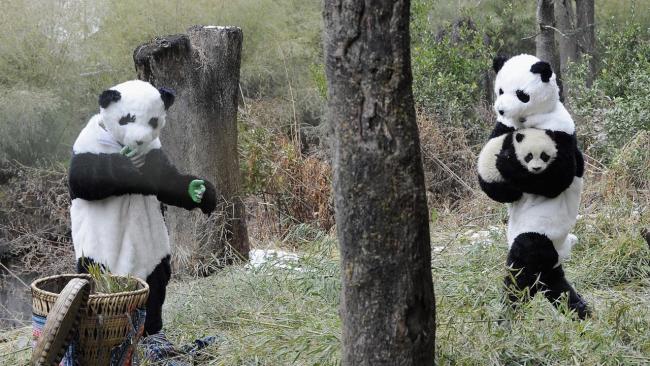How do we want to work today?
When the open call for Kaaitheater’s residency programme How to Live & Work Now? reached Nada Gambier, she saw the opportunity to continue the collective research practice she had started a few months before the outbreak of the corona virus with: Gosie Vervloessem, Michiel Reynaert, Ondine Cloez and Eszter Némethi. On the day before the last of their two-week residency, they reflect on the fruits of this period.
An interview with Nada Gambier, Gosie Vervloessem, Michiel Reynaert, Ondine Cloez and Eszter Némethi, by Eva Decaesstecker (Kaaitheater, January 2021)
When the open call for Kaaitheater’s residency programme How to Live & Work Now? reached Nada Gambier, she saw the opportunity to continue the collective research practice she had started a few months before the outbreak of the corona virus. The principal goal of the residency was to share a space with four of the artists she had been practicing this collective research with: Gosie Vervloessem, Michiel Reynaert, Ondine Cloez and Eszter Némethi. On the day before the last of their two-week residency, they reflect on the fruits of this period. Large sheets of paper with questions and possible answers pasted on the walls will be the now invisible guide in this conversation.
What are collective research sessions? And did their form alter during the residency?
NADA GAMBIER: The first versions of the collective research sessions were held once a month and essentially open to everyone – but mainly attended by people working in the performing arts scene. In the sessions, you could share a concern from your artistic practice and have the opportunity to dive into your work with a group of people. This could mean a variety of things: from trying out a choreography with ten people, to testing what people get out of your text when you’re preparing a proposal. Because we often work alone, I felt the need to create occasions for collective moments in our artistic trajectories.
Because of corona, getting people in the same room who were not in the same bubble became very difficult. For the residency at Kaaitheater, I wanted to spend a longer period of time with others and work around this idea of shared practices. So I asked Gosie, Michiel, Ondine and Eszter, who all participated in or knew about the sessions, to join me. For two weeks, we shared what we were busy with and exchanged thoughts on how we want to work today. You can see the results of our discussions and experiments on all the large sheets of paper hanging on these walls.
I see a lot of questions. Did you find some answers to them?
GOSIE VERVLOESSEM: Yes, there were clear answers, for example to the question ‘which relations do we want to foster?’ We were quite outspoken about that. (laughs) But there were other questions that had no answer.
Are there answers you want to share with an audience?
ESZTER NÉMETHI: During the residency, we were thinking about how to document what happened in these two weeks. How do we bring it out of this room? We decided to write a letter, to share what’s on the brown paper over there, which holds answers. They are individual answers, even if they’re shared. They are so specific that they require this room to understand them. Still, we find it important to try and make this translation towards an audience.
You are also planning a public event in May. Are there any more details around this yet?
NG: Yes, we just received the confirmation of the funding! It will be a concretisation of some of the more conceptual things that we have been talking about during the residency. The works in the event will have different forms and be spread all over the city.
ONDINE CLOEZ: It will be a combination of our own work and contributions of other artists which we will invite to join us. So far, what we made during the residency has been very collective, but at the event, there will also be space for our individual work.
You talk about individual but shared questions and answers. Can you define the common ground you found through these questions?
NG: I think this smaller white paper is quite revelatory. It includes crucial things that we share on how we want to work. Some of us dealt already with these things before the corona crisis, for some it especially surfaced during this period, but we are all interested in long-term processes, in being in the logic of ongoing work.
We also see our practices as poetic activism. We were talking about activism a lot: do we feel like we’re engaged with it or not? And if yes, how? We came up with the idea of poetic activism: a type of activism which allows for doubts to exist. Compared to political activism, ours is more obscure, but it feels like activism nonetheless.
Last but not least, there is a desire from all of us to change the relationship between artists and institutions and how they work together. These are some of the solid things that are crucial for us and that we share.
What did you discuss when questioning the relation between artists and institutions?
EN: The question of the institutions came up because we spent a year without them, we survived this long without them. During this time, we have reconsidered a lot of our relationships that we used to take for granted: what does it mean to present? When do I want to present? What is my work? All these kinds of questions shifted.
GV: Several times, we questioned our need for institutions. Even though some people in the arts field don’t feel like having anything to do with institutions anymore, we all want to maintain the dialogue with them. But we want our relationships with institutions to be different.
MICHIEL REYNAERT: The funding we got today was the Flemish ‘activiteitenpremie’ (a subsidy from the Flemish government to give a boost to the cultural sector during the corona crisis, ed.). This grant also made us reflect on the relation between artists and institutions. Would this money have been possible before? If not, why not? Might it continue? The funding allows artists to do certain things they cannot do with the usual distribution of money.
At the same time, we don’t want to keep this ‘activiteitenpremie’. It’s more something that stimulates us to think: what would happen if funding were accessible in that way, with very little concept required and a budget that doesn’t need much justification? If this funding is the start of a change, what dynamics do you have to build in order for it to make more sense? It might make sense under the current conditions, but it doesn’t make so much sense on the long term.
NG: It’s very contradictory. Valuing the process was indeed what this residency was about. We worked and only thought about the public on the way. When working with institutions, this is still something very difficult to value. There is definitely a wish from us to change this. Can we go away from the production mode and instead look at practices and build relationships that are around the trajectory of the work?
This particular funding goes totally against the idea of the process. It only values the product.
The times are unusual. Us being able to work here at the Kaaitheater, doing the kind of work that is precious all the time. What we’ve done here is not unusual as such, we do this a lot. Invent structure in the muddy waters of questions. But it is unusual to do it within an institution and being paid for it. Will there be a space for this after corona?
What do you take with you as individual artists from this residency – apart from the event in May?
GV: Some questions we were dealing with were very reflective on my work, on my position towards my work and on my position as an artist. Am I an activist, a poetic activist? What does it mean when I call myself an artistic researcher? Without finding answers, this process enriched the questions and thus my work.
MR: For a long time, I have been rehearsing in a non-artistic work situation, always with the intention of seeing how this experience can feed back into the artistic context. This was the first time that I had intense discussions with artists about what I’m doing there.
NG: There are certainly things that are clearer to me, such as how I position myself within my practice and how I deal with the different elements of my practice. But I will need some time to let things sink in before I’ll realise what the effect is.
EN: For me, there are some things that I have been thinking about before but never articulated enough. Things I felt I had a certain idea about, but of which I wasn’t sure enough to elaborate. It’s very nice to hear similar reflections on these things by other people, a bit better articulated or just articulated at all. Sometimes, something remains unclear, but it gains meaning when other people are dealing with it too. It means I don’t have to question anymore whether it’s important. The underlying issue can come closer. In this way, this residency allowed me to shuffle my priorities.
OC: The most interesting aspect of these two weeks for me was doing this research in a group. Normally, I research a lot on my own and I meet people to make something together. Now we were researching but without a clear goal. It was nice to be in this unknown with other people. Not trying to find solutions, but sharing questions. We didn’t know what would be shared beforehand, but we agreed to do it together. I would love to do it more!
GV: This was indeed nice, not looking for solutions or having to fix stuff. To stay in the not-knowing is very enriching. Because we are in this unknown together, there is a constant sort of shifting of what this not-knowing is. Which shifts the perspective.
EN: We took the time to answer questions we rarely take our time to respond to. It felt important to spend this precious time on these questions, to be patient with them, fight them, deal with them and to do this together.


